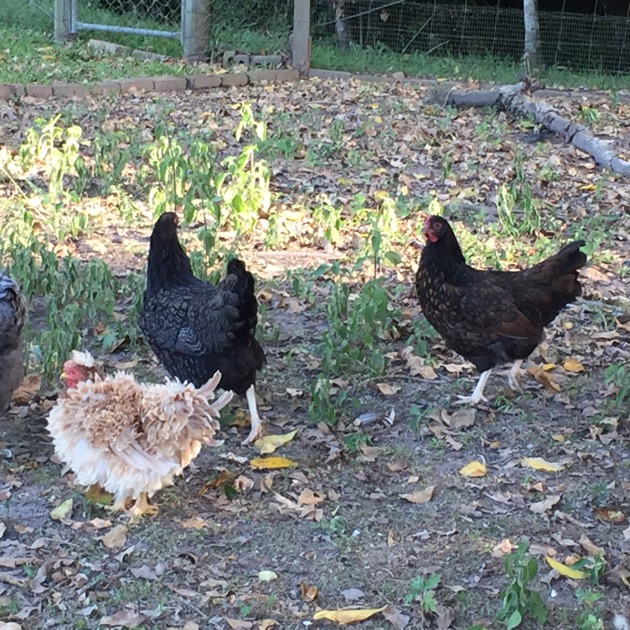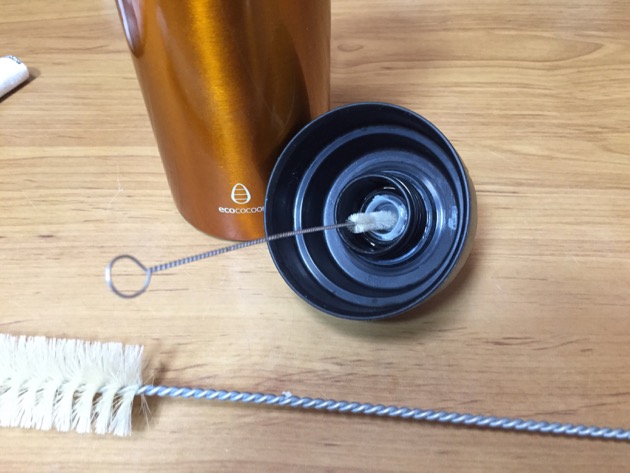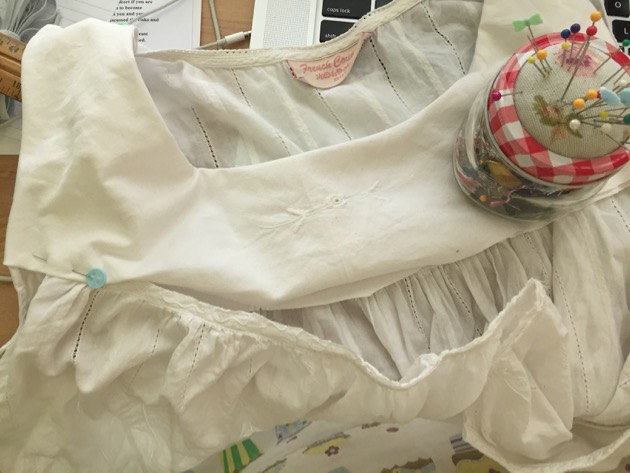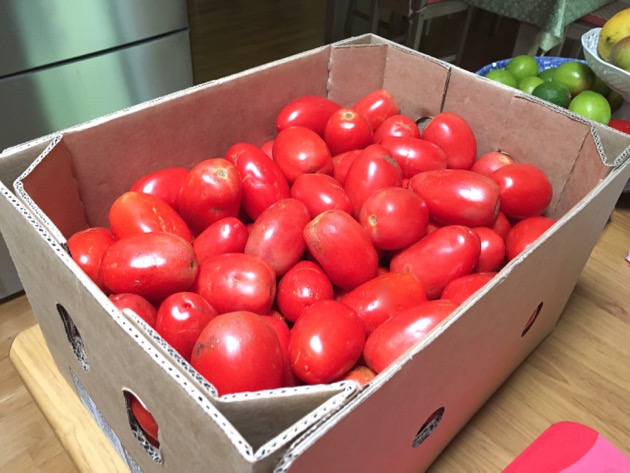It's exhilarating and exciting settling in new chickens and setting up a vegetable garden for another year. Of course the chickens require more thought and time because not only do we provide nutrition and water, they also need shelter, security, comfort, nests, roosts and we want them to have the opportunity to spread their wings, scratch the ground, chase insects and live a good life. We have an unspoken agreement with our chooks - they provide eggs and entertainment for us and we give them an environment that supports them in a life that is far removed from the confinement, distress and limitations that millions of their cousins live with every day.
Ginger frizzle Tricia with silver laced and gold laced Barnevelders Dora and Thora.
Cora, a light Sussex.
Farmyard crosses Lora and Flora.
Flora, Lora, Thora, Cora and Dora.
Jezebel, Miss Tammy, Patrick (losing her feathers) Kathleen and Nora.
Annabel, a blue Australorpe.
Our older ladies free ranging to the side of the house.
We've already introduced the new chooks to bread soaked in milk, which they loved, and live worms, which they were confused by. There is much more in store for them in the coming weeks and months. Soon they'll be out free ranging with their older sisters, walking around on the grass, enjoying the sunshine and the freedom to go where they choose within their large secure garden.
To recap for all the new readers, we now have 12 chickens which give us enough eggs for ourselves and our family. We get our girls from
Kate at Beautiful Chickens over at Mount Samson, just to the west of Brisbane. Kate's chickens are mostly pure breeds with a few farmyard crosses and they're healthy, wormed and vaccinated.
Our new girls are Flora - buff and white farmyard cross, Lora - farmyard cross that looks like a New Hampshire, Dora - silver laced Barnevelder, Thora - gold laced Barneveldver and Cora - light Sussex. They have joined our older girls Nora - blue laced Barnevelder, Miss Tammy - silver laced Wyandotte, Patrick - barred Plymouth Rock (named Patrick because I was convinced she was a boy when she was younger), Tricia and Kathleen - two ginger Frizzles, and Jezabel and Annabel - two blue Australorpes. At the moment the two sets of girls are living in the same shed, separated by a wall with a door they can see through. During the day we let the older chooks out to free range and the younger girls out into the run just outside the coop.
And what of the garden, you ask? It's getting there. We're much slower this year. We've been slowed by age and the desire to enjoy the process. But even thought it's harder for us we still relish the opportunity we have to make the most of the land we live on. Sure we have aches and pains sometimes but we push through it and just get on with it. We also stop for tea, to watch the chooks, to sit and talk in the shade of the umbrella and to discuss the important topics of seasonal food, rainfall, soil fertility, compost, worms, bugs, mulch, trellises and sweet peas. Hanno bought me a garden arch for my birthday, which is now at the entrance to the garden with sweet peas planted at the base. Soon those delightful plants will scramble up the arch and flower, hopefully for a few months. When they finish flowering, we'll plant cucumbers there.
The new arch way will soon hold a swag of sweet peas.
Front bed planted up, back bed still needs a lot of work.
Waiting to be planted - penstemon, roses and salvias.
Roses soaking in Seasol, they'll be planted out today after I chop off all that old wood.
View from the back door.
Yesterday I dug up two roses in the front garden and have them sitting in Seasol before planting them out in large pots today. I also have two small carpet roses - The Fairy - that will be grown in smaller pots among the vegetables. My other flowers are stocks, salvias, primroses, Japanese wind anemones and no doubt, self-sown Cosmos will appear as time goes on.
Our vegetables this year are snap peas, bok choy, several types of lettuce, turnips, kohl rabi, beetroot, ruby chard, green beans, butter beans, swedes, kale and Welsh onions. Soon there will be daikon, tomatoes and ginger and I've left in a mild pepper that won't grow during the cold months but won't die either. I'll cut it back a bit in spring and it till start producing chillies again. Our herbs are parsley, sage, thyme, rosemary and basil, and we have raspberries, oranges, lemons, passionfruit, cumquats, loquats and bananas. We've just harvested 5.7 kg of rosellas that are now in the freezer waiting to be made into jam and tea. Those bushes were removed last week.
It a good combination having chickens with a vegetable garden. They each supply the other with some of their needs - the chickens give fertility to the garden in the form of manure, the garden gives green leaves and fruit to the chickens which boosts the nutrition level of their eggs. It's symbioses at its best and it plays out everyday right outside our backdoor. We are indeed two lucky ducks.


























































